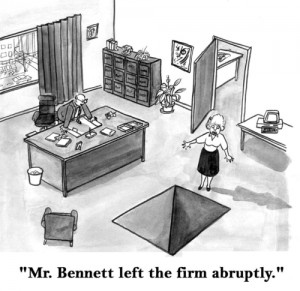Special to the Financial Independence Hub
Sudden retirement syndrome is not a real medical condition as far as I’m aware but for me it best describes the shock of withdrawal that occurs when a person leaves their corporate job.
This can occur through either downsizing, formal retirement or can even occur when a person is leaving after many years spent with the Corp to do something else.
The shock from going unprepared from a busy work-life to nothing can be very stressful and in extreme cases can even result in premature death. We all have heard stories of people in retirement who lost their motivation to do much of anything, started drinking heavily, and died within a short time.
I’ve known quite a few people who have suffered from SRS. My father suffered through it, a close friend died because of it, and I even had a taste of it after leaving my corporate job of 36 years — which is crazy in itself because I already had a game plan in place for my next move. I clearly remember the ringing in my ears, the feeling of uncertainty, the feeling of living in a fog for a period of time. It’s hard to break away from something that has become a piece of you over the years.
It’s important to note that not everyone will suffer from SRS. People who are able to detach themselves successfully from work when they walk out the door are usually spared. An example would be an assembly line person who is able to leave their job when the whistle blows and not think about work until the next day. While an assembly line worker may be burned out physically and mentally, as they are not challenged intellectually, the Corp does not own their soul, unlike corporate executives who are linked to their work 24/7 and whose self-identity is tied to the job that just ended.
Retirement shock can be hell







